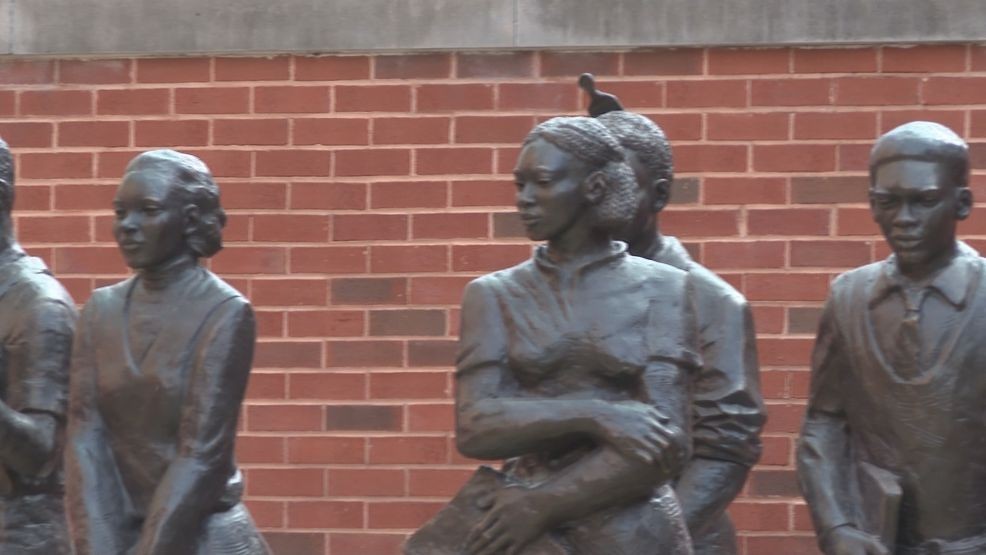Honoring Trailblazers: ETSU’s New Bronze Sculpture Celebrates Integration
A Monument to Courage
East Tennessee State University (ETSU) recently took a pivotal step in honoring its history by unveiling a life-size bronze sculpture that pays tribute to five remarkable students who broke the color barrier in the late 1950s. This significant monument now stands proudly in front of the ETSU library, a place where students gather to learn and grow. The unveiling at Borchuck Plaza marks a moment of reflection and celebration for the university community.
Who Are the Honorees?
The sculpture recognizes five courageous individuals: Eugene Caruthers, Elizabeth W. Crawford, George L. Nichols, Mary Luellen Wagner, and Clarence McKinney. These brave students made history when they became the first African Americans to enroll at East Tennessee College, now known as ETSU. Their actions in a time when segregation predominantly shaped the South are monumental, paving the way for future generations.
Quiet yet Powerful Actions
Unlike many movements of their time, the integration of these five students occurred without public protest or large-scale upheaval. Their quiet determination and courageous pursuit of education have left an indelible mark on ETSU. George L. Nichols emphasizes that while their journey did not attract widespread attention, the significance of their actions has echoed through the decades, inspiring countless others to follow in their footsteps.
A Diverse Pathway
While each student pursued different academic paths, their individual journeys on campus intersected through their shared experience of breaking barriers. Their disciplines ranged widely, reflecting the diverse aspirations of students who dared to envision a different future. This diverse representation underscores the idea that progress in education benefits everyone, fostering a richer community.
A Collaborative Creation
The sculpture was crafted by Detroit-based sculptor Austen Brantley, who engaged deeply with the honorees and their families to ensure their likenesses and legacies were accurately captured. This creative collaboration not only brought their figures to life in bronze but also infused the artwork with the spirit of the courage they embodied. The attention to detail in the sculpture serves as a testament to the respect and admiration held for these trailblazers within the ETSU community.
A Lasting Symbol of Inclusion
This monumental piece is not merely an artistic endeavor; it stands as a durable symbol of progress and hope. The placement of the sculpture at a focal point on campus emphasizes its significance as a reminder of those who fought for inclusion. It encourages current and future students to reflect on the history of their institution and the values of courage and resilience that paved the way for their own educational opportunities.
A Committed Legacy
The sculpture will remain a permanent fixture at ETSU, ensuring that future generations will have the opportunity to learn about and be inspired by the stories of Eugene Caruthers, Elizabeth W. Crawford, George L. Nichols, Mary Luellen Wagner, and Clarence McKinney. It serves not just as a recognition of the past, but as a challenge to uphold the ideals of inclusivity and respect within the university and beyond. As students pass by this powerful symbol, they are reminded of the sacrifices made to advance education and equality, reinforcing a legacy of resilience and determination at ETSU.



